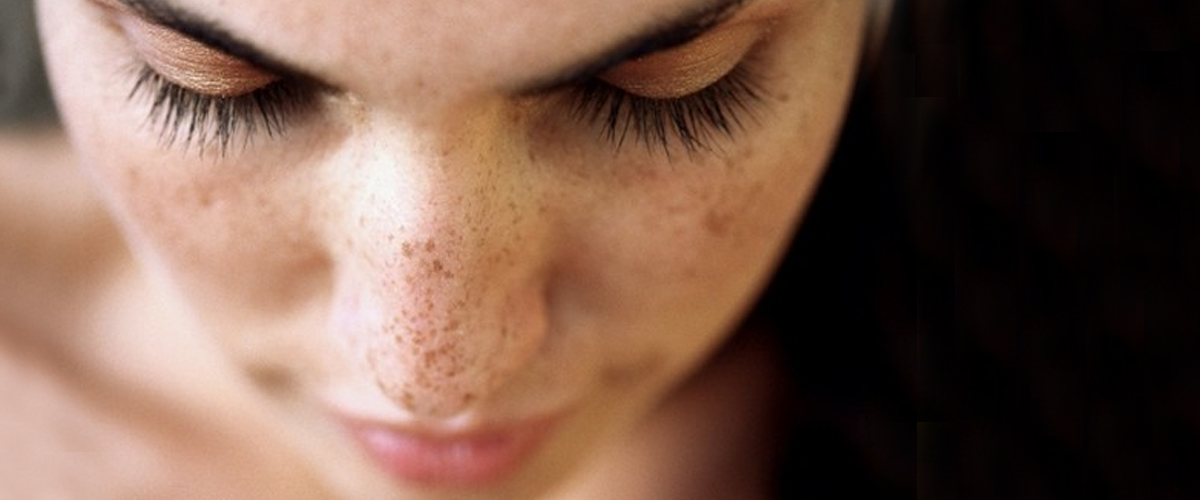
If you have identified your type of dark spot in this article , it’s time to find out why you have them. Different types of dark spots are caused by different factors, and identifying your type of dark spot is the first step to clearing them.
Find out the causes below before deciding the best steps to remove your dark spots.
1. Freckles
Freckles are caused by a combination of genetics and sun exposure. Those with fair skin, blond or red hair and light-coloured eyes are affected by UV rays more than others. However, people with dark skin are not entirely immune to the effects of the sun.
Freckles are different from other types of pigmentation because they could be seen in young children and doesn’t take time to build up. They could be inherited due to genetics, but not everyone in the same family will inherit them. Even for non-identical twins, one could have no freckles at all, whereas the other faces the problem.
2. Melasma/ Chloasma
Melasma mostly affects women with medium to dark skin tones because of the amount of cells that make colour in the skin (melanocytes). The most common triggers of this type of dark spots are sun exposure, change in hormonal levels, medications, and cosmetics.
The changes in hormonal levels include pregnancy (most common factor for chloasma), birth control, and hormone controlling medications. Certain medications will also cause melasma, so if your spots appear after these changes occur, check with a physician or pharmacist on the medication.
Cosmetics that irritate the skin could also trigger melasma, so it is vital in knowing what suits and doesn’t suit your skin to avoid it.
3. Age Spots/ Liver Spots
Estrogens effects the production of melanin production. As people age, the regulation of estrogen is affected. Melanin synthesis increases (due to lack of regulation by estrogen) and there is a higher chance for skin that has been over exposed to UV rays over the years to develop age spots. This affects women mainly during menopause.
If you’re not affected by any of these types of pigmentation, head on over to our part 2 where we will be talking about:
1. Post-Inflammatory Hyperpigmentation (PIH)
2. Post-Acne Pigmentation (PAP)
3. Sun Burn Pigmentation (Solar Lentigines) (SBP)
4. Computer Radiation Spots (CRS)
